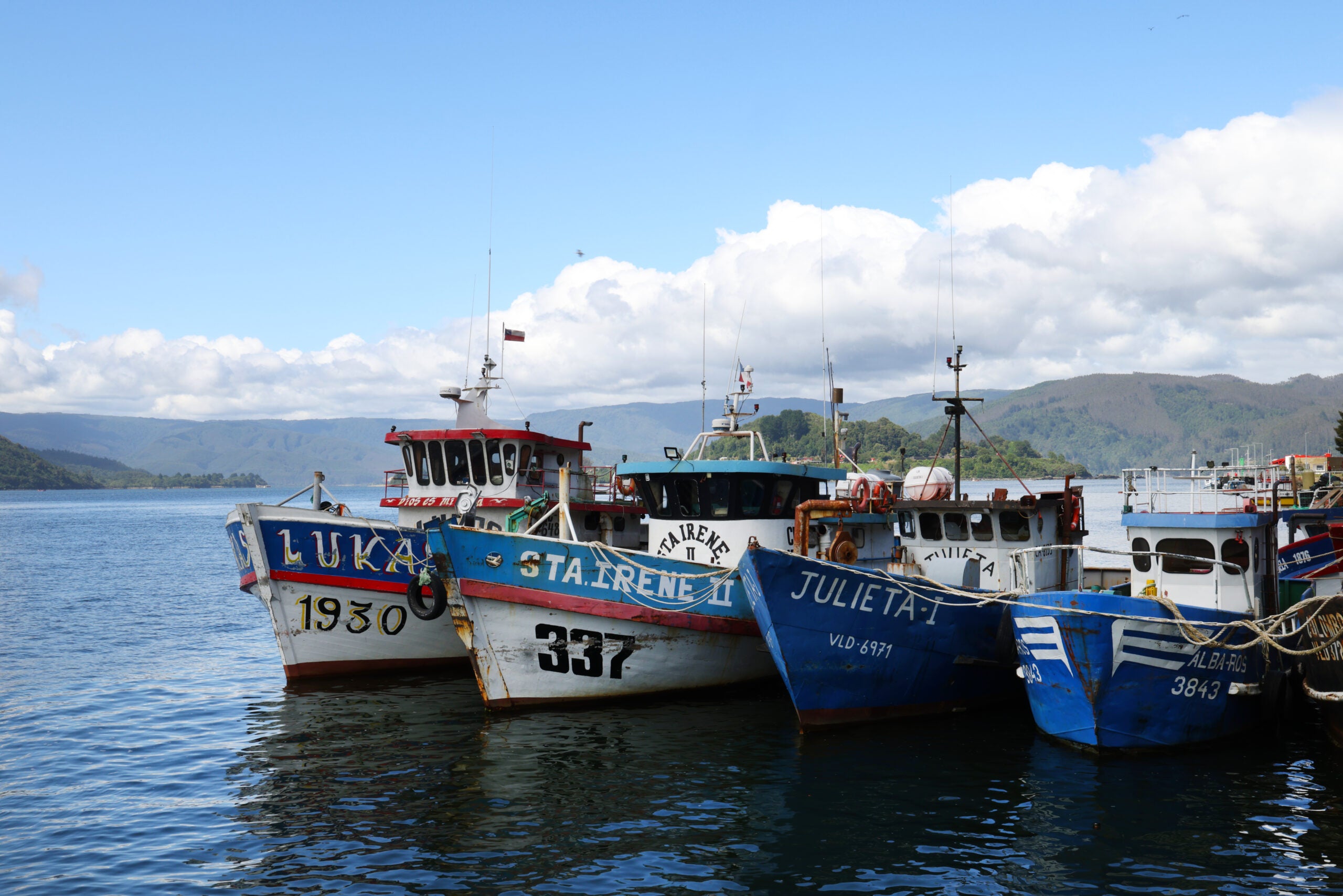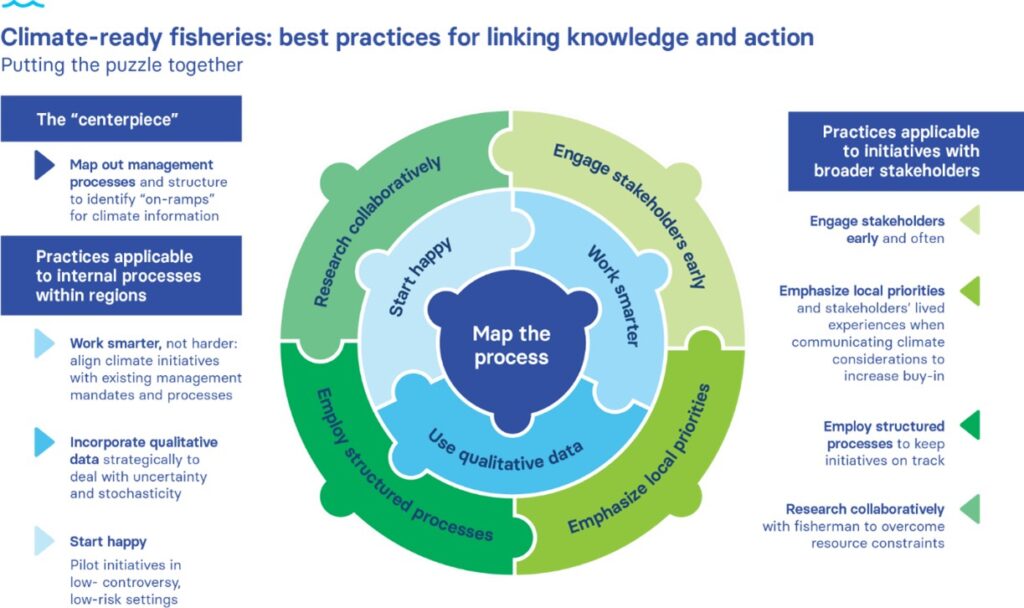Linking knowledge and action for climate-ready fisheries: Putting the puzzle together

By Julia Mason and Sarah Weisberg
What will it take to create climate-resilient fisheries?
Fisheries scientists and managers across the US have been sensing a change in the air — and not just the highest temperatures ever recorded, although they probably contribute. There’s a growing sense of climate urgency in fishery management conversations and agendas.
Warming waters affect fish movement and growth, creating serious fisheries management complications and risks to fishing communities. Climate-driven fishery disasters are on the rise, including last year’s devastating snow crab collapse and fishery closure in Alaska, where an extreme heat wave wiped out billions of crabs and millions of revenue dollars for fishing-dependent towns.
The National Oceanic and Atmospheric Administration (NOAA) is ramping up its efforts to adapt and take action, including releasing updated Regional Action Plans for climate science, and mobilizing Inflation Recovery Act funding toward climate-ready fisheries initiatives. Fisheries scientists have also made tremendous progress in producing climate knowledge, from sophisticated models of how climate change affects marine ecosystems to state-of-the-art forecasts of future conditions.
But despite these efforts, climate knowledge still isn’t being adequately incorporated into management decisions. A 2022 Government Accountability Office study of fisheries management policies in the US found that uptake of climate information is “limited.”
One reason for this disconnect is a lack of opportunities to communicate or coordinate across regions. Although fisheries management bodies across the US are launching initiatives to bring climate science into decision-making and promote climate-ready fisheries, those efforts are isolated. This means that groups might stumble over the same obstacles or reinvent the same solutions, slowing momentum when rapid and concerted action is needed.
Creating space for cross-regional learning
In a collaborative paper published this month in the journal Marine Policy, Environmental Defense Fund (EDF), NOAA, and partner organizations synthesized best practices and lessons learned from these emerging efforts to incorporate climate knowledge into management action. These best practices emerged from a virtual workshop that EDF hosted in August 2022 with fisheries managers and scientists from across the US, with the goal of promoting cross-regional learning and accelerating shared progress. Participants presented emerging approaches for incorporating climate knowledge into management, discussed enabling factors for success and diagnosed unresolved challenges.

The best practices — putting the puzzle together
From the workshop, broader literature, and collaborators’ lived experiences, co-authors distilled eight best practices for linking climate knowledge and fisheries management action:
- Map out management processes and structure to identify “on-ramps” for climate information
- Work smarter, not harder: align climate initiatives with existing management mandates and processes
- Strategically incorporate qualitative information to deal with uncertainty
- Start happy: pilot initiatives in low-controversy, low-risk settings
- Engage stakeholders early and often
- Emphasize local priorities and stakeholders’ lived experiences to increase buy-in, rather than imposing a climate framing
- Employ structured processes to stay on track
- Leverage collaborative research with fishermen to overcome resource constraints
These practices may be thought of as interlocking pieces of a knowledge-to-action “puzzle.” Different regions might prioritize certain pieces depending on their context and capacities, and there’s no singular, right sequence or method for putting them together.
That being said, best practice #1, mapping out management processes, emerged a key enabling first step — a “centerpiece” that shows how the other pieces might fit together, making subsequent efforts more efficient and effective.
Key takeaways and remaining challenges
In addition to the collective best practices, the paper showcases a suite of promising tools and approaches that can be used even in areas where there isn’t a lot of data available, increasing both participation and climate knowledge. It also highlights the need for further cross-regional coordination and knowledge sharing, which would move the needle forward and encourage innovation.
Of course, the puzzle is still missing some pieces — even with the ideal use of these best practices, there’s much work to be done in order to achieve effective climate-ready fisheries management. Securing sufficient resources and staff, better incorporating social science, and aligning the timelines of science and management for rapid, coordinated climate responses emerged as cross-cutting priority challenges.
This is an alarming but also an exciting time to be working in fisheries. The challenges are clear, but we have more political will and resources than ever before. As we harness this alarm to move toward action, these best practices — and others that surface from continued innovation and learning — can help inform how to leverage those resources efficiently and effectively to promote climate-ready fisheries.











